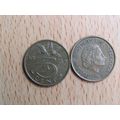Animal - Jaguar, Panthera onca, in Belize - Taschen postcard 1997
- Condition : Used
- Dispatch : 2 Days
- Brand : None
- ID# : 122803799
- Quantity : 1 item
- Views : 629
- Location : United Kingdom

- Seller : justthebook (+1703)
- Barcode : None
- Start : Wed 04 Dec 2013 11:02:42 (BST)
- Close : Run Until Sold
- Remain : Run Until Sold
More Listings from This Seller view all
Seller's Description
- Postcard
- Picture / Image: Jaguar 'Panthera onca', Belize - photo Frans Lanting
- Publisher: Taschen, 1997
- Postally used: no
- Stamp: n/a
- Postmark(s): n/a
- Sent to: n/a
- Notes / condition:
Please ask if you need any other information and I will do the best I can to answer.
Image may be low res for illustrative purposes - if you need a higher definition image then please contact me and I may be able to send one.
------------------------------------------------
Postage & Packing:
UK (incl. IOM, CI & BFPO): 99p
Europe: £1.60
Rest of world (inc. USA etc): £2.75
No additional charges for more than one postcard. You can buy as many postcards from me as you like and you will just pay the fee above once. (If buying postcards with other things such as books, please contact or wait for invoice before paying).
Payment Methods:
UK - PayPal, Cheque (from UK bank) or postal order
Outside UK: PayPal ONLY (unless otherwise stated) please. NO non-UK currency checks or money orders (sorry).
NOTE: All postcards are sent in brand new stiffened envelopes which I have bought for the task. These are specially made to protect postcards and you may be able to re-use them. In addition there are other costs to sending so the above charge is not just for the stamp!
I will give a full refund if you are not fully satisfied with the postcard.
----------------------------------------------
Text from the free encyclopedia WIKIPEDIA may appear below to give a little background information (internal links may not work) :
*************
The jaguar (/'d?ægw?r/ or UK /'d?ægju?.?r/; Panthera onca) is a big cat, a feline in the Panthera genus, and is the only Panthera species found in the Americas. The jaguar is the third-largest feline after the tiger and the lion, and the largest in the Western Hemisphere. The jaguar's present range extends from Southwestern United States and Mexico across much of Central America and south to Paraguay and northern Argentina. Apart from a known and possibly breeding population in Arizona (southeast of Tucson), the cat has largely been extirpated from the United States since the early 20th century.
This spotted cat most closely resembles the leopard physically, although it is usually larger and of sturdier build and its behavioral and habitat characteristics are closer to those of the tiger. While dense rainforest is its preferred habitat, the jaguar will range across a variety of forested and open terrains. It is strongly associated with the presence of water and is notable, along with the tiger, as a feline that enjoys swimming. The jaguar is largely a solitary, opportunistic, stalk-and-ambush predator at the top of the food chain (an apex predator). It is a keystone species, playing an important role in stabilizing ecosystems and regulating the populations of the animals it hunts. The jaguar has an exceptionally powerful bite, even relative to the other big cats.[3] This allows it to pierce the shells of armoured reptiles[4] and to employ an unusual killing method: it bites directly through the skull of prey between the ears to deliver a fatal bite to the brain.[5]
The jaguar is a near threatened species and its numbers are declining. Threats include loss and fragmentation of habitat. While international trade in jaguars or their parts is prohibited, the cat is still frequently killed by humans, particularly in conflicts with ranchers and farmers in South America. Although reduced, its range remains large; given its historical distribution, the jaguar has featured prominently in the mythology of numerous indigenous American cultures, including those of the Maya and Aztec.
The word comes to English from one of the Tupi–Guarani languages, presumably the Amazonian trade language Tupinambá, via Portuguese jaguar.[6] The Tupian word, yaguara ""beast"", is sometimes translated as ""dog"".[7][8] The specific word for jaguar is yaguareté, with the suffix -eté meaning ""real"" or ""true"".[6][9]
The first component of its taxonomic designation, Panthera, is Latin, from the Greek word for leopard, p?????, the type species for the genus. This has been said to derive from the pa?- ""all"" and ??? from ???e?t?? ""predator"", meaning ""predator of all"" (animals), though this may be a folk etymology[10]—it may instead be ultimately of Sanskrit origin, from pundarikam, the Sanskrit word for ""tiger"".[11]
Onca is the Portuguese onça, with the cedilla dropped for typographical reasons, found in English as ounce for the snow leopard, Uncia uncia. It derives from the Latin lyncea lynx, with the letter L confused with the definite article (Italian lonza, Old French l'once).[12]
The jaguar, Panthera onca, is the only extant New World member of the Panthera genus. DNA evidence shows the lion, tiger, leopard, jaguar, snow leopard, and clouded leopard share a common ancestor, and that this group is between six and ten million years old; the fossil record points to the emergence of Panthera just two to 3.8 million years ago.[13][14] Phylogenetic studies generally have shown the clouded leopard (Neofelis nebulosa) is basal to this group.[13][15][16][17] The position of the remaining species varies between studies and is effectively unresolved.
Based on morphological evidence, British zoologist Reginald Pocock concluded the jaguar is most closely related to the leopard.[17] However, DNA evidence is inconclusive and the position of the jaguar relative to the other species varies between studies.[13][15][16][17] Fossils of extinct Panthera species, such as the European jaguar (Panthera gombaszoegensis) and the American lion (Panthera atrox), show characteristics of both the lion and the jaguar.[17] Analysis of jaguar mitochondrial DNA has dated the species' lineage to between 280,000 and 510,000 years ago, later than suggested by fossil records.[18]
type=printed postcards
theme=animals
sub-theme=jaguars
county/ country=belize
number of items=single
period=1945 - present
postage condition=unposted
Listing Information
| Listing Type | Gallery Listing |
| Listing ID# | 122803799 |
| Start Time | Wed 04 Dec 2013 11:02:42 (BST) |
| Close Time | Run Until Sold |
| Starting Bid | Fixed Price (no bidding) |
| Item Condition | Used |
| Bids | 0 |
| Views | 629 |
| Dispatch Time | 2 Days |
| Quantity | 1 |
| Location | United Kingdom |
| Auto Extend | No |



 for 1 item(s)
for 1 item(s)














